Beverly Gray's Blog: Beverly in Movieland, page 21
October 17, 2023
Buster Keaton: The Scarecrow Saves the Day

If you need to cheer up agrouchy kid (or maybe a grouchy adult), try a small dose of Buster Keaton. Iwas in exactly that situation recently, with an eleven-year-old boy and anine-year-old girl who felt like committing mayhem on one another. To restore peace—howI wish this worked as well on world affairs!—I sat them down on the sofa andshowed them a 19-minute Keaton short from 1920. The silence was golden,interrupted only by gales of laughter.
The film was “The Scarecrow.”Set in a rural landscape, it begins with two farmhands, Keaton and a huge hulkof a man named Big Joe Roberts, at home in a tiny one-room cottage. Theirliving space may be small, but they’ve cleverly engineered it to supply alltheir needs. What looks at first glance like a living room can quickly beconverted into a kitchen: the old-fashioned phonograph cabinet instantly turnsinto a stove and the bookcase into a refrigerator. With its pillows removed, asettee metamorphoses into a kitchen sink, with the water draining through a pipeto feed a duck pond outside. (The same ingenuity applies to the cottage’ssleeping arrangements: a double bed is also, somehow, a piano.)
One of many hilarious momentsoccurs as it’s time to eat dinner at the long table in the center of thecottage. When Joe turns a crank, a host of eating implements (salt and peppershakers, for instance) descend from the ceiling, attached to long cords. Whenyou’ve finished salting your own food, you simply swing the salt shaker back toyour dining partner at the other end of the table. A similar system is handyfor removing ice-cold beer bottles from the fridge without having to leave yourseat.
A Keaton film would hardlywork without a big chase and a romance. The pretty girl here is the farmer’sdaughter, a would-be dancer, who’s quietly sweet on Buster but is also courtedby Big Joe. The first big chase (there are several) involves Buster desperatelytrying to escape from a dog he thinks is rabid because of all the foam aroundits mouth. (Actually, the dog has just scarfed down a lemon cream pie left on awindowsill to cool.) And then there’sthe sequence in which Buster, with everyone out to get him, manages to pose asa knock-kneed scarecrow—but one capable of taking revenge on offenders whoaren’t paying attention.
It's all good clean fun, butanother Keaton short on the same DVD, “The Paleface,” left me more uneasy. Inthis Wild West tale, the Indians are NOT the bad guys, but they sure aren’tvery bright. After they’ve been cruelly swindled by Anglos who are after theirland, they vow to take revenge on the first white man who crosses their path.This of course turns out to be Buster, a naïve butterfly hunter. After someamusing confusion, he is duly tied to a stake and a pyre is set ablaze. Butwhen Buster fails to catch fire (you see, he wears these asbestos BVDs), thetribal members fall on their faces and declare him a god. Eventually, the evilwhite guys get their just deserts, and Buster helps the Indians (played, ofcourse, by overstuffed white guys like Big Joe Roberts) to reclaim their land.And, yes, he wins the pretty Indian maiden too.
I continue to marvel atKeaton’s skill as a mime and an acrobat. (He also co-wrote and directed.) Butmaking comedy out of the Native Americans’ woes just doesn’t strike me as veryfunny.
October 13, 2023
Spreading the Word About “Contagion”
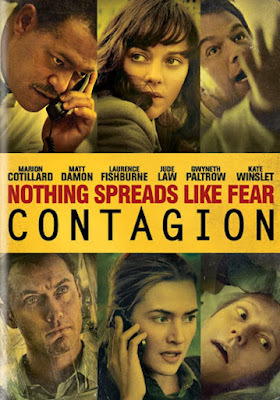
Who’da thunk I’d watch adisaster movie and feel . . . nostalgia?But that was my first reaction when viewing Contagion, the 2011 medicaldisaster movie directed by the very busy Steven Soderbergh. I first became aSoderbergh fan after seeing 1989’s sex, lies, and videotape, a modestbut emotionally dynamic chamber piece that won the Palme d’Or at the CannesFilm Festival and ushered in an era of adult-themed indies made by seriousyoung filmmakers. Since then, Soderbergh has had a solid career in film andtelevision, including Erin Brockovich, the multiple Oscar-winning Traffic,and a sexy George Clooney/Jennifer Lopez thriller, Out of Sight. Forvariety he’s helmed some lucrative franchises like Ocean’s Eleven andits sequels.
When it was released in 2011,Contagion did nicely at the box office. Its impressive cast and far-flungsettings attracted viewers around the globe, eager to see such major stars asGwyneth Paltrow, Matt Damon, Marion Cotillard, Laurence Fishburne, KateWinslet, and Jude Law fight off a worldwide pandemic. But I doubt anyone tookit terribly seriously. After all, in 2011 we hadn’t endured a true globalmedical disaster for almost 100 years. Not since 1918, and the latter days ofWorld War I, had the world seen the so-called Spanish Flu epidemic that tookthe life of my mother’s father, as well as millions of others. It was excitingto watch Paltrow and Winslet in the throes of a horrible virus, but we knewperfectly well that we and our loved ones were safe.
That was then. Now that we’vebeen through 3½ years of COVID, I could watch Contagion from a new, moreenlightened perspective. A lot of what appears on screen seems all toofamiliar: the origin of the virus among tainted bats and pigs in a Chinesemarketplace; the spreading of the disease, in those first innocent days, fromsimple hand-to-hand contact; the fear behind every cough as the world starts tocatch on to what is happening; the grimly mounting statistics on the TV screen;the desperate urge for a vaccine that will return the world to the way it wasbefore. The filmmakers presciently show so many things that became all toofamiliar in 2020, like the turning of football stadiums into masshospitalization sites. And there’s Jude Law’s blogger character, who evolvesinto an anti-vaxer urging the public to avoid vaccination altogether. Soundfamiliar?
Some things that are shown inthe film fortunately didn’t happen in real life. First of all, the film’seventual miracle vaccine is injected into the nasal cavity (yuck!), somethingwe fortunately haven’t had to deal with. Secondly, though some of us did helpstrip store shelves bare of toilet paper, we didn’t run out of food and findourselves making do with MREs, like the movie’s characters. Nor, at least in myexperience, did real-life vaccine injection sites devolve into vicious brawlsas people fought over scarce resources. Another of the film’s plot strands hasthe U.S. and its western allies cynically sending placebos overseas so as tohang onto the precious dosages for their own populations. In some ways we’vebeen very lucky that these hideous movie scenarios haven’t played out for real.
Yet the movie overlooks someissues that we’ve had to acknowledge in the real world. Like: the fact thatdeaths from COVID have been very much linked to social class, with hard-workingethnic minorities (of which the film has very few) bearing the brunt of theinfection. Contagion’s innocence in such matters makes it seem ratherquaint. Still, we can’t say we weren’t warned.
October 10, 2023
The Bling Ring: Robbing the Rich to Keep for Yourself
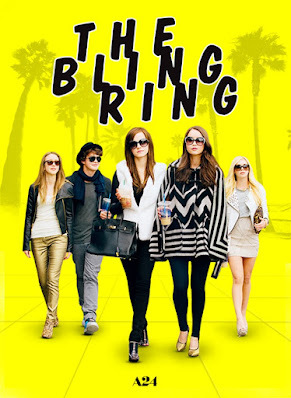
You’ve seen the headlinesabout mobs of teenagers ripping off major department stores, loading up ontrendy fashions and expensive jewelry and then disappearing into the night.It’s a recent phenomenon and an ugly one, reflecting have-not kids (often inthrall to older crooks) and their willingness to create chaos because they feelcheated out of an expensive lifestyle.
Filmmaker Sofia Coppola exploreda different kind of “bling ring” in 2013, focusing on a real-life group ofupper-middle-class SoCal teens who made it into the pages of Vanity Fair afterbeing arrested for breaking into the homes of pop culture celebs (Paris Hilton!Lindsay Lohan!) and running off with some $3 million worth of cash andbelongings. Coppola’s version, which she wrote and directed, fictionalizes theactual kids but sticks close to their crimes and motives. Taking advantage ofCoppola’s usual cinéma vérité stylistics, it conveys the excitement ofpampered teenagers, whom Coppola herself has called "products of ourgrowing reality TV culture,” emulating their small-screen idols by literally swipingthe expensive toys with which the stars surround themselves in their naturalhabitat. The original Vanity Fair article, by Mary Jo Sales, was called“The Suspects Wore Louboutins,” and within Coppola’s film we see the members ofthe informal gang (including its one boy) happily modeling Louboutins, Rolexes,and other expensive trinkets in their own bedrooms, with their parents totallyoblivious to what they’re up to.
Coppola’s has been aninteresting career. She is, of course, the daughter of a one-time Hollywood YoungTurk (and one of Roger Corman’s early protégés),FrancisFord Coppola, who segued from 1963’s Dementia 13 to 1972’s Oscar-winningThe Godfather and its sequels. When making 1990’s The Godfather, PartIII, Francis Coppola found himself short an ingenue, and gave the partintended for Winona Ryder to his own daughter, who had to put up with scathingreviews of her performance. Somehow she survived that debacle, and launched herown feature-film writing and directing career with The Virgin Suicides in1999. This grim but fascinating adaptation of Jeffrey Eugenides’ debut novelwas followed by Lost in Translation, which garnered 4 Oscar nominations,including best director. At that point in Hollywood history, no woman had everwon an Oscar for directing, and Coppola too was shut out . . . but she did takehome a statuette for her very original screenplay about two Americans adrift inafter-hours Tokyo. Since then, she’s directed about seven other films,including an anachronistic life of Marie Antoinette and an upcoming biopicabout Priscilla Presley.
There’s no denying hercinematic skill, nor her unique perspective on young women in positions ofpower. But if we’re being uncharitable we can also view her as one ofHollywood’s Nepo Babies, the children of movieland royalty for whom doors open.It’s hardly surprising that such well-endowed young people spark resentment inthose who were not so auspiciously born. Still, everyone is a bit gaga about Hollywood connections, howeverobscure. One of the kids in The Bling Ring, the young boy who seems lesscomfortable than the others in taking what doesn’t belong to him, has a dadwith industry ties, perhaps one reason he is accepted as part of this Hollywood-obsessedcrew. But, as The Bling Ring shows, he earns one of the harshestsentences doled out by the legal system. By way of contrast, the characterplayed by Harry Potter’s Emma Watson (the one big name in this veryyoung and mostly unknown cast) is terrific as Nicki, who puts on a great showof contrition and basic innocence. Now that’s acting!
October 6, 2023
“National Velvet”: A Girl and Her Horse
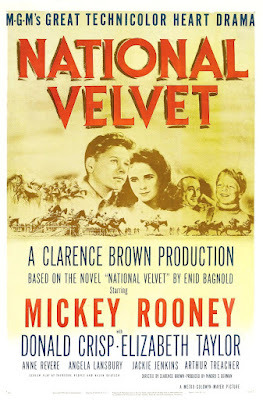 Let’s face it: NationalVelvet is a fairy tale. But who doesn’t like fairy tales, on occasion,especially when they feature a beautiful young girl who positively glows withhealth and high spirits? I came to National Velvet (1944) after readingMatthew Kennedy’s upcoming tribute to his favorite movie star. When asked towrite a blurb for the book jacket of his On Elizabeth Taylor: An OpinionatedGuide (coming out this spring from Oxford University Press), I felt I wasfairly knowledgeable about the life and career of La Liz. (After all, I’dendured such dreck as The Sandpiper, while also cheering impressiveTaylor projects like Who’s Afraid ofVirginia Woolf.) But Matt, who’s seen absolutely everything Taylor hasfilmed, aroused in me the determination to revisit some of her films and checkout others for the very first time. That’s how I came to watch thetwelve-year-old Elizabeth in an ersatz but tremendously lovable story that,judging by the credits, was supposed to be showcasing Hollywood veteran MickeyRooney.
Let’s face it: NationalVelvet is a fairy tale. But who doesn’t like fairy tales, on occasion,especially when they feature a beautiful young girl who positively glows withhealth and high spirits? I came to National Velvet (1944) after readingMatthew Kennedy’s upcoming tribute to his favorite movie star. When asked towrite a blurb for the book jacket of his On Elizabeth Taylor: An OpinionatedGuide (coming out this spring from Oxford University Press), I felt I wasfairly knowledgeable about the life and career of La Liz. (After all, I’dendured such dreck as The Sandpiper, while also cheering impressiveTaylor projects like Who’s Afraid ofVirginia Woolf.) But Matt, who’s seen absolutely everything Taylor hasfilmed, aroused in me the determination to revisit some of her films and checkout others for the very first time. That’s how I came to watch thetwelve-year-old Elizabeth in an ersatz but tremendously lovable story that,judging by the credits, was supposed to be showcasing Hollywood veteran MickeyRooney.National Velvet began life as a children’s novel by British authorEnid Bagnold, about a young girl and a plucky horse who together win thegrueling steeplechase known as the Grand National. British filming locationswould have been appropriate, but this was 1944, and the world was still atwar—though in desperate need of inspirational entertainment. That’s why thefilm contains a mix of English andAmerican actors (like the British Donald Crisp and the American Anne Revere asTaylor’s stern but loving parents). It’s also why the family’s seaside workingclass village is played by California’s Pebble Beach. There’s no mistakingMickey Rooney, in the role of a young drifter who sets the plot in motion, fora down-at-the-heels British lad. But the teenaged British-born Angela Lansburyplayed Taylor’s eldest sister here, in the same year she broke into movies withthe much more sinister Gaslight.
Matt Kennedy’s studyemphasizes how important National Velvet wasin terms of the very young Taylor finding her place in the world. Already amovie veteran, featured in such Hollywood fare as 1943’s Lassie Come Home,she discovered when playing Velvet Brown the opportunity to choose her ownpath. As she was to say, “Riding a horse gave me a sense of freedom andabandon, because I was so controlled by my parents and the studio. When I wason a horse we could do what we wanted. Riding a horse was my way of gettingaway from people telling me what to do and when to do it and how to doit." So it was entirely fitting that at the end of production she wasgiven “her” horse, King Charles, as a parting gift. And she remained an animallover for the rest of her days.
Matt also focuses welcomeattention on the supportive relationship of young Velvet and her mother. Thoughboth of Velvet’s parents seem formal and a bit stuffy—they primly address oneanother as Mr. and Mrs. Brown—there’s another side to Anne Revere’s portrayal.Once a champion herself, she balances hard-nosed practicality with a deepappreciation for “a breathtaking piece of folly,” like entering the untrainedhorse called The Pie in a serious, competitive race. Unlike so many self-centeredmovie moms, Mrs. Brown has her daughter’s best interests at heart . . . andtrusts her to do the right thing. It’s a lovely performance, and one thatdeservingly led to a Supporting Actress Oscar. We should all be so lucky tohave moms like her.
Speaking of which, it’s myown mother’s birthday today. Happy birthday, Estelle Gray, wherever you are!
October 3, 2023
Robert Altman Goes Indie: “Come Back to the 5 & Dime Jimmy Dean, Jimmy Dean”
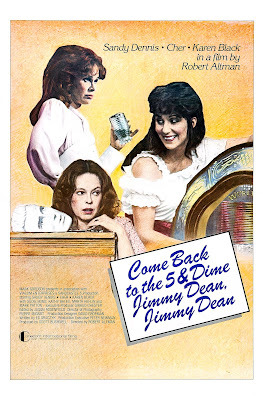
It’s hard to resist a moviewith an outrageous title like Come Back to the 5 & Dime Jimmy Dean,Jimmy Dean. Especially when you learn it was directed by a past master ofquirky ensemble dramas, Robert Altman. It was not until I’d watched this small1982 film that I found out it began life as a play, written by an Ohio-based dramatistwho was also for many years the artistic director of a local theatre company.It had a brief stay on Broadway when Altman left Hollywood for more fertileartistic climes. That stage production starred Oscar winner Sandy Dennis (Who’sAfraid of Virginia Woolf), Oscar nominee Karen Black (Five Easy Pieces), and Broadway newcomer Cher,who would win her own Oscar for Moonstruck five years later. Alsofeatured were Marta Heflin and Kathy Bates, another future Best Actress Oscarrecipient. All these women repeated their roles in the modest film production.
Hooray for low-keyproductions in which actors have the opportunity to shine! The film, like theplay, mostly takes place in a modest Woolworth five-and-dime store, a placewhere you can sip a Coke at the lunch counter, listen to the McGuire sistersharmonize on the jukebox, and then shop for pretty much anything you can thinkof. This one is in McCarthy, Texas, astone’s throw from Marfa. The rapidly decaying Marfa is, in the eyes of thestore’s patrons, a shrine of sorts, because it is where the film Giantwas shot, back in 1955. Giant, of course, starred Rock Hudson, ElizabethTaylor, and heartthrob James Dean, who was killed in a California auto crashbefore the film’s release.
In a story that moves backand forth in time, we see the central characters in 1955 and also at a reunionmeet-up twenty years later. (Their costumes and appearances don’t really changefrom era to era, which makes for a lot of confusion on the part of viewers.)They are all members of a fan club called The Disciples of James Dean, and havethe matching red jackets to prove it. Mona (the twitchy but always interestingDennis) is convinced she was chosen to be an extra in Giant. She’sfurthermore sure that she spent a romantic evening in Marfa with Dean himself,resulting in a never-seen but clearly difficult son she named after his daddy.In the twenty years since the filming of Giant and Dean’s deadlyaccident, some things have changed and others haven’t. Bates’ character, thesassy Stella Mae, seems to have gotten rich. Heflin’s Edna Louise is nowmarried and perennially expecting. ButMona remains as daffy and Dean-infatuated as ever, and Cher’s voluptuous Sissyis still the siren of the group. At midpoint, there’s also a mysteriousstranger (Karen Black) who seems to know a surprising amount about the town andits inhabitants. Aha! A mystery! But not one that seems, in the long run,terribly convincing.
I try to be open-minded whenit comes to art. I don’t like rules about who should or shouldn’t handlecertain subjects. I don’t think you should be required to write only about whatyou know in a deeply personal way. That being said, the man who wrote this playabut women doesn’t seem to have a genuine understanding of the opposite sex. Ican’t put a finger on anything he gets terribly wrong, but the characters he’screated seem far more theatrical constructs than flesh-and-blood human beings.And the play’s stab at exploring gender identity, which may have seemed bold in1982, just strikes me as a ham-handed trick here.
September 29, 2023
Dealing with The Cincinnati Kid
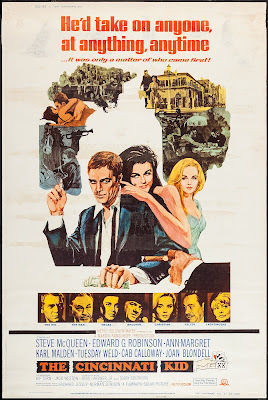 Last spring I was honored toappear on Kelsy Norman’s podcast, Speeding Bullitt, which deals with allthings Steve McQueen. Though I don’tpretend to be a McQueen expert, I was invited to speak about my book on TheGraduate, because of Steve McQueen’s unlikely reaction to seeing DustinHoffman catapulted into stardom via his hang-dog portrayal of BenjaminBraddock. (Five years later McQueen and Hoffman starred together in Papillon.It was not a match made in heaven.) [https://www.speedingbullitt.com/ ]
Last spring I was honored toappear on Kelsy Norman’s podcast, Speeding Bullitt, which deals with allthings Steve McQueen. Though I don’tpretend to be a McQueen expert, I was invited to speak about my book on TheGraduate, because of Steve McQueen’s unlikely reaction to seeing DustinHoffman catapulted into stardom via his hang-dog portrayal of BenjaminBraddock. (Five years later McQueen and Hoffman starred together in Papillon.It was not a match made in heaven.) [https://www.speedingbullitt.com/ ] Like the rest of the world,I’ve seen a fair share of Steve McQueen films, including The MagnificentSeven, The Thomas Crown Affair, and of course Bullitt. ButI’d never seen The Cincinnati Kid (1965) until yesterday, when I pluckeda DVD off a library shelf. No motorcycles here, but otherwise it contains afair sampling of what McQueen is all about: stoicism, machismo, a glint ofhumor, a fierce determination to come out on top. And, underneath, a small hintof potential for tenderness.
The Cincinnati Kid is about high-stakes poker players trying to best oneanother in New Orleans. I’ve seen the film compared to The Hustler (1961)if you swap McQueen for Paul Newman and a desk of Bicycle cards for a pool cue.I’m hardly a poker player, and can’t tell a full house from a straight flush, soit was hardly easy for me to appreciate the subtleties of the on-screen game.But what really set my mind buzzing was the film’s supporting cast, whichseemed to encompass the whole history of Hollywood.
In The Cincinnati Kid(with McQueen of course playing the title role), the kid’s #1 card-playingnemesis is Lancey “The Man” Howard, played with panache by none other thanEdward G. Robinson. Robinson, who’d starred as a Capone-like crime boss in LittleCaesar back in 1931, was then 72, near the end of a long and distinguishedcareer. (His last film was Soylent Green, filmed just before he died in1973). I won’t soon forget Robinson’s dignity as well as the deep, resonantvoice he brought to this film. Caught somewhere in the middle is another cardplayer, Shooter, played by the great character actor, Karl Malden. Malden hadwon a Supporting Actor Oscar for A Streetcar Named Desire and wasnominated for another for On the Waterfront.
Among the additional playersat the table during the Big Game are Jack Weston as Pig, Cab Calloway asYeller, and Jeff Corey as Hoban. Weston is a familiar face, a specialist inplaying nebbish-y roles. Calloway, mostly known as a singer and band-leader,once ruled the airwaves with his “Minnie the Moocher,” though he doesn’t singhere. Corey, blacklisted during the HUAC years, was later famous throughoutHollywood as an acting coach whose students included some of the industry’sbiggest names. And the sinister card shark determined to take down his rivalsby any means necessary was portrayed by one of Hollywood’s most sinister badguys, Rip Torn.
Then there are the women.Pretty blonde Tuesday Weld was about 22, near the beginning of an up-and-downcareer, when she played the Kid’s main squeeze, the loving and innocentChristian. Ann-Margret, not long after her breakout role in Bye Bye Birdie (1963)but long before her Oscar-nominated performance in Carnal Knowledge (1971)is the sultry, dangerous Melba, a vamp if there ever was one. But for me one bigthrill was the presence of former-cutie Joan Blondell, who’d made her screendebut back in 1930. Her part isn’t large, but as a dealer nicknamed LadyFingers she’s a pleasure to watch flipping those cards.
September 26, 2023
The Rocky Road to Stardom: Sylvester Stallone and Talia Shire
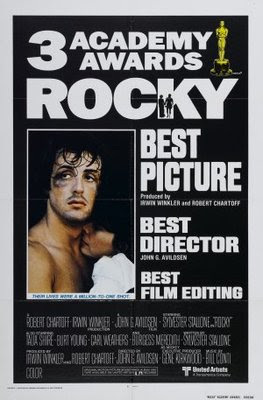
At my gym, while putting inmy time on the elliptical machine, I found myself watching a “Rocky” marathon.First there was the climax to Rocky V, featuring a brutal free-for-allin an alley, then ending with an inspirational moment on the steps of the PhiladelphiaMuseum of Art between the man himself and his actual real-life son. (There wereno supertitles on the gym screen, so I lacked any helpful dialogue. But with amovie like this one it’s impossible not to know what’s going on.)
Once Rocky 5 had cometo its heart-tugging conclusion, the original Rocky started up, so Icould watch a younger, chunkier Sylvester Stallone fight his way out of a meatlocker and into a nation’s hearts. I’m not exactly a boxing fan, but in 1976 Iwas swept away by the experience of seeing Rocky in a packed theatre.(Remember when?) It’s one thing toexperience a fight film while lounging on your couch; it’s quite another whenhundreds of people are gathered in a darkened hall, all of them rooting for thesame outcome. I’ll never forget the feeling of celebration when Rocky held hisown, as though he had fought for US as well as himself.
I first met Stallone when hewas an aspiring actor and I was Roger Corman’s “ace assistant” (in Cormanparlance) at New World Pictures. He had come in that day in 1974 to interviewfor the role of a comic baddie, Machine Gun Joe Viterbo, in the original DeathRace 2000. I first saw him, dressed all in black, looming out of thedarkness of a seedy lunchroom to say hello to the film’s director, SteveCarver. Following his hilarious stint in Death Race, he acted again forSteve, playing Frank Nitti in Corman’s Ben Gazarra-starring Capone.
It says something about theHollywood of that era that Rocky’s lady love also had a Roger Corman connection.Talia Shire had, back in 1970, played a major part in one of Roger’s last AIPfilms, the aggressively countercultural Gas-s-s-s- Or It BecameNecessary to Destroy the World in Order to Save It. Along with suchup-and-comers as Bud Cort, Ben Vereen, and the late Cindy Williams, she playedone of a group of young hipsters fleeing from a poison gas intended to wipe outeveryone over 25. In 1972 she had a much starrier role as Connie Corleone in TheGodfather, for which she received an Oscar nomination. (It didn’t hurt that her brother FrancisFord Coppola was the director.) When Rocky came along, she was cast asthe hero’s shy love interest, Adrian, which earned her a second Oscar nod, thistime for Best Actress. Both films went on to have sequels, and so her careerseemed assured.
But by the time I signed onas the story editor at Corman’s Concorde-New Horizon, Talia was clearlybecoming tired of mediocre roles in forgettable films. In 1995 she was welcomedback by Roger with an opportunity to direct an erotic thriller called OneNight Stand. She was pleasant to work with, but I barely recall the film:we made so many, and sometimes they all seemed alike. In any case, this was herone and only directing gig. But the memories returned as I watched her in a bittersweetlow-budget film, 2008’s Dim Sum Funeral, in which she plays a deceasedChinese matriarch’s close friend and factotum. There are some tender momentsand some funny ones, along with some exotic funerary rituals, and Shire doesher best to look as though she’s giving it her all.
September 22, 2023
Chasing After “The French Connection”
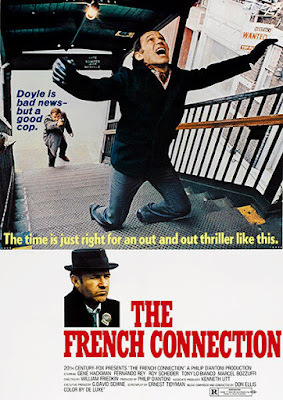
Some years ago, backstage atthe West Hollywood Festival of Books, I chanced to chat with William Friedkin.It wasn’t much of a conversation: I was hardly a fan of The Exorcist,and didn’t have much in the way of insider questions to pose to the famousdirector. Nor did he seem to really welcome my interest in his career. Still,he was an Oscar winner, and a leading light among the New Hollywood filmmakersof the 1970s. So the news of his passing sent me to re-watch his most acclaimedthriller, 1971’s The French Connection.
Despite its title, most ofthis down-and-dirty film is set in the mean streets of New York City. In earlyscenes I was pleased to see a few genuine glimpses of the Vieux-Port ofMarseille, where some European baddies are planning a major drug deal, sending$32 million worth of heroin to the Big Apple in the trunk of a car beingshipped across the Atlantic. By the time they and the dope arrive, two scruffyNYPD detectives (played by Roy Scheider and the Oscar-winning Gene Hackman) areon their trail, and most of the film becomes a cat and mouse game, with thecops pursuing the “frogs” through dingy alleyways and traffic-heavy streets.The mid-film chase involving a hijacked commuter train pursued by Hackman (as“Popeye” Doyle) in a commandeered sedan is what stood out in my mind from mylong-ago first viewing of this film, and it’s just as exciting now, some fifty yearsafter the initial release. (Wow! – the woman with the baby carriage really setsthe heart athumping.) But there are lots of other great action sequences aswell. I’ve read that in directing thisfilm, Friedkin took his inspiration from the French thriller Z, in whichdirector Costa-Gavras filmed a fictional story about a political assassinationin documentary fashion, thus heightening its drama. As Friedkin was to put it,“It was a fiction film but it was made like it was actually happening. Like thecamera didn't know what was gonna happen next.” With Z as a model, he shot The French Connection similarly,using a sense of rawness and uncertainty to pump up the adrenaline of audiences.
I was surprised to learn thatthe budget was a modest $1.5 million, though the filmmakers went $300,000 over.But because of what was, even in the Seventies, modest budgeting, Friedkincouldn’t hire a glamorous star like Paul Newman or Steve McQueen. Tough guysLee Marvin, Peter Boyle, James Caan, and Robert Mitchum turned down the Popeye role,which eventually went to Hackman. He had Hollywood cred, including a SupportingOscar nomination for Bonnie and Clyde in 1967, but The FrenchConnection is what truly put him on the map.
Though Popeye and his partnerare based on specific New York cops, I was surprised this time around torecognize that the film makes little effort to characterize them outside oftheir on-the-job behavior, Popeye’s pork-pie hat, and his leering way ofchallenging others: “Do you pick your feet?” Frankly, they seem to have no lifebeyond their profession. Their language is raw and their behavior is oftenbeyond the pale. In fact we learn that a former partner of Popeye’s died when oneof his hunches backfired. Even when Popeye and Cloudy ultimately triumph,there’s a painful irony: the final crawl makes clear that none of thedrug-runners they’ve brought down ever really faces serious punishment, and thekingpin of the whole operation gets away scot-free. Just another day in thelife of New York’s Finest.
September 19, 2023
Whale Watching: Discovering “Whale Rider”
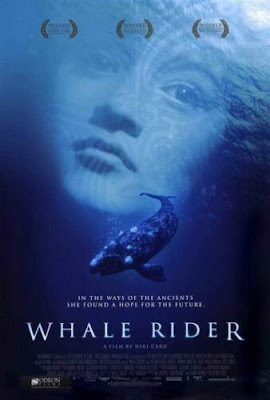
Flying back from a seasidevacation, I found myself watching a film that made a major splash in 2002: WhaleRider. This Germany/New Zealandco-production, filmed in the seaside town where the source novel is set,depicts Maori life in a way that is respectful and heartfelt. Yes, of coursethis film—like so many dealing with native cultures—can be deemed inspirational,but there’s no sense here of a quaint neverneverland where problems aremagically solved because everyone’s heart is pure. Whale Rider feelsvery much of the present day, and what magic there is evolves out of thecharacters’ deep desire to serve their ancient community.
Whale Rider begins with an earthly tragedy. As a female voicenarrates the proud history of the Maoris in New Zealand, we see a woman inlabor in a modern hospital. She’s carrying twins, but the male child dies atbirth, taking his mother with him. The twice-bereaved father-to-be, shaken tohis core, departs the community, leaving his infant daughter, Pai, to be raisedby her grandparents.
Flash forward 12 years. Paiis a smart, inquisitive girl deeply invested in her native culture. But thoughshe shares a strong bond with her grandfather, known as Koro, he feels obligatedto bar her from the deepest traditions of their tribe. Koro is revered as alocal spiritual leader, one steeped in the old ways, but now he’s seeking aworthy successor. The dead grandson was to fill this role, but a girl-childcan’t be trusted to step into the position. You can easily figure out whathappens: despite his efforts to train the boys of the community, they all fallshort. (When there’s a key diving challenge meant to establish a future leader,one backs out because he’s got a cold, while another can’t even swim.)Meanwhile, Pai, whose love of the community is so great that she gives up achance to join her father in Europe, is severely scolded when she tries on herown to pick up the traditional Maori skills. But of course when the chips aredown she comes through brilliantly, and the film ends in reconciliation andvictory.
One great achievement ofNicki Caro’s direction is that it never seems merely sentimental. The ending istriumphant, but it’s not Disney-style happily-ever-after. Pai’s grandfather,played by New Zealand treasure Rawiri Paratene, is a particularly complexcharacter, both lovable and occasionally ruthless. His interactions with younglead actress Keisha Castle-Hughes are sometimes endearing, sometimes disturbing, always of interest. Behindhim is Vicky Haughton as his wife, Pai’s grandmother, who at first seems mildbut has her own sort of quiet strength. There are other strongcharacterizations as well, notably Pai’s tortured father, who skips out of hisparents’ world to find himself as a visual artist in Germany, and also heringratiating good-time uncle who turns out to have surprising skills of hisown.
But the success of this filmstands or falls on its young lead actress. The story goes that KeishaCastle-Hughes, daughter of a Maori mother and an Anglo father, had never actedbefore. She went directly from an Auckland classroom to a role that requiredher to be strong, sensitive, and always convincing. So impressive is she that,among many other honors, she was the then-youngest female to be nominated for aBest Actress Oscar for her performance. Today she crusades for Greenpeace and continuesto act (see Season 5 of Game of Thrones) and has had a complicatedromantic life, bearing her first child at age 16. Stardom doesn’t always imply good sense.
September 15, 2023
China Dolls? Anna May Wong and “Joy Ride”
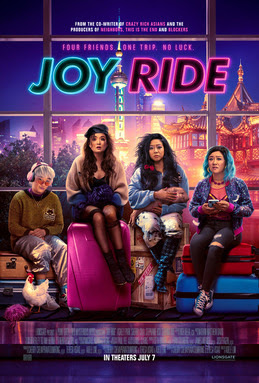
Anna May Wong? Who exactlywas she? Fans of Old Hollywood remember her as an “exotic” (thoughAmerican-born) actress, mostly cast as self-sacrificing Madam Butterfly typesor as a sinister Dragon Lady. The most outrageous moment of her career(basically 1919-1961) came in 1935, when MGM denied her the leading role ofO-lan, the sympathetic Chinese peasant in Pearl Buck’s bestselling The GoodEarth. The part went instead to Luise Rainer, a German actress who won anOscar for playing O-lan in yellowface. The word is that Wong was screen-testedto play the seductress Lotus in The Good Earth, though it is not clearwhether she was rejected by her studio or indignantly turned the part down.
My colleague Carl Rollyson, an extraordinarilyprolific biographer and chronicler of biography as an art form, recentlypublished a piece in the New York Sun assessing what has come to be aboomlet of books on Anna May Wong’s career. Now that people of Asian heritageare slowly being acknowledged as part of the American scene, the time seemsripe to survey those who’ve come before. I read Carl’s column with greatinterest, partly because my own growing-up years had important links to Japanand partly because I’d just seen (in the wee hours on a trans-Atlanticflight) a recent flick called JoyRide.
There was a time, of course,when actors from Asian backgrounds were rarely at the center of any Hollywoodproduction. In 1961, two decades after The Good Earth, I remember thevery Caucasian Alec Guinness being cast as a Japanese businessman with aromantic streak in A Majority of One and a bucktoothed Mickey Rooney ina cringeworthy performance as Mr. Yunioshi in Breakfast at Tiffany’s. ActualAsian women seemed to have slightly more opportunity: though the 1956 comedy Teahouseof the August Moon starred Marlon Brando as a wily Okinawan interpreter,the lovable geisha role was played by a genuine Japanese actress, Machiko Kyo,who had previously starred for the great Kurosawa in Rashomon. In thesplashy 1957 romantic drama, Sayonara, Miiko Taka played opposite Marlon Brando in a story of two post-war loveaffairs between American soldiers andJapanese civilians. The same film featured Miyoshi Umeki, who won a SupportingActress Oscar for playing Red Buttons’ doomed Japanese bride.
These roles for Asian (andAsian-American) women have tended to showcase them as demure and loving. But inrecent years it has started to seem OK to be both Asian and funny, even brash.The burgeoning career of Awkwafina has surely helped move things in thatdirection, and the success of Crazy Rich Asians is another indicatorthat Asian (and Asian-American) actors can be as outrageous as anyone else inHollywood. Then of course there’s the Oscar-nabbing Everything EverywhereAll At Once, which introduced some moviegoers to both screen veteranMichelle Yeoh and busy newcomer Stephanie Hsu. Having gotten critical acclaimfor playing both Yeoh’s daughter Joy Wang and arch-villain Jobu Tubaki in theDaniels’ absurdist film, Hsu is also highly visible in this year’s Joy Ride,a female-and-Asian take on the kind of raunchy road trip movie that hasprevious featured white males (The Hangover) and Black females (GirlsTrip). Joy Ride begins with the stereotypical high-achieving Asian-Americanlawyer (Ashley Park), sending her to Beijing along with her hot-to-trotchildhood friend (Sherry Cola), an androgynous cousin (Sabrina Wu), and a starof Chinese TV with secrets of her own (Hsu). Their language is raw, andsome of their adventures are grotesque, before the inevitable upbeat ending.Who says blondes have more fun?
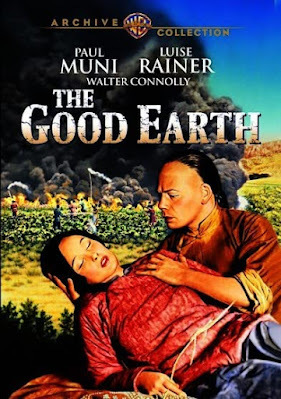
Beverly in Movieland
- Beverly Gray's profile
- 10 followers



